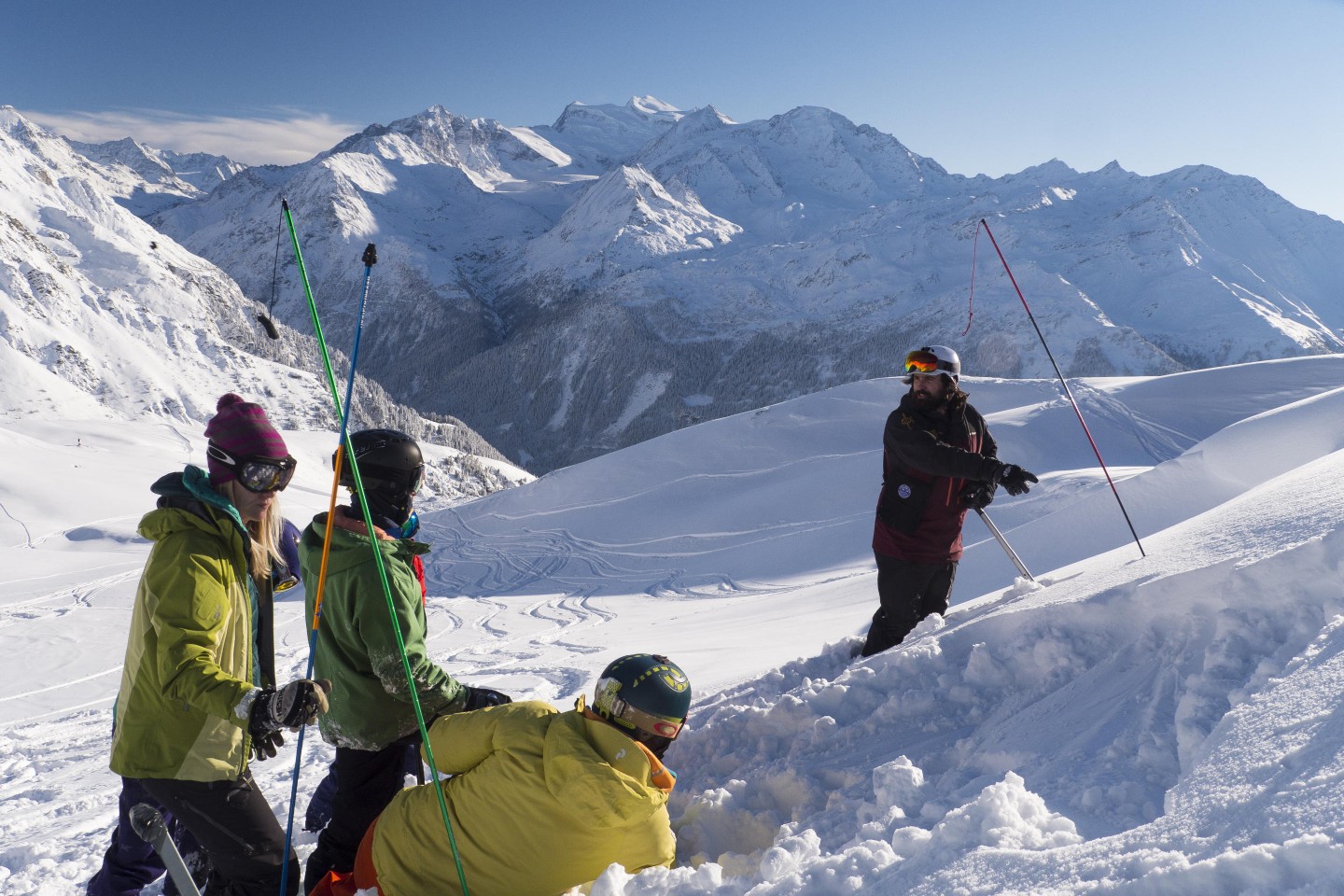Just when we all thought that winter had forgotten us here in the Alps, she blew in like a grand diva, dazzling us with her brilliance. With all the excitement of this late start to the winter, it’s so easy to overlook the dangers that our freshly white-washed landscape holds and venture out with reckless abandon. Maev Cox played it safe by attending one of Powder Extreme’s newly-launched avalanche safety and awareness courses.
Each year, the mountains remind us of their awesome power in devastating slides that claim young lives. It’s a fact that ninety percent of fatal avalanches are triggered by the victim or someone in their party. The intention to do an avalanche course was gathering dust on my ‘to do’ list so I felt great excitement at the opportunity to tick if off by completing the ISTA (International Snow Training Academy) Discovery course under the instruction of Antoine Blaizeau. On a breathtaking day, during the height of the arctic freeze in January, our group of learners assembled.
As we began, Antoine introduced us to the concepts of ISTA, the innovative Lausanne-based program which designed the course. Simply put, ISTA has created a universal language for learning that doesn’t bog learners down with jargon and specialised terms. The main aim of ISTA is to make their courses accessible to anyone who plays on the mountain.
The Discovery course is their entry-level course. Its objective is to provide an introduction to the fundamentals of avalanche risk prevention as well as providing practical knowledge of the snow pack and how best to handle an avalanche situation. The course is divided into three parts: before, during and after. The bulk of the learning is covered in the first section and Antoine took the time to discuss the various environmental factors such as, but not limited to, wind, temperature, aspect, incline, precipitation and visibility that act as our clues. Understanding the variables within these elements is essential when assessing avalanche risk. Of course, human factors play a role too, such as always checking equipment and entering into a gentlemen’s pact which agrees that all opinions be taken into account at the outset of any backcountry adventure.
Our day was a satisfying mix of time spent getting to grips with the material contained in the concise course manual and time spent on the mountain, analysing the terrain and getting hands-on instruction. During the afternoon session, we covered the second and third parts of the course. Antoine dug a snow pit which gave us incredible visual information on the various layers of snow on which we ski and helping us to understand what makes certain layers weak. Our team worked up a sweat despite the freezing temperatures as we mimicked a rescue situation, using our transceivers to search for a transceiver hidden beneath the snow. We learnt the patterns in which to search, to probe and to dig, in order to complete the most efficient and effective search.
Antoine’s Top Tips:
- Take the time. Avalanche risk is significantly reduced by creating space between individuals when moving about on the mountain.
- “Don’t keep your tongue in your mouth”. In other words, trust your gut and don’t fear voicing your concerns, being outspoken could just be the thing that saves you.
- Be mindful of changing conditions, what is true for the present may be altogether different later in the day.
Watch your ego and don’t let enthusiasm blindside common sense. - Don’t use a plastic shovel! In fact, invest in good gear all round.

